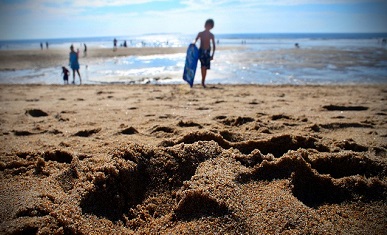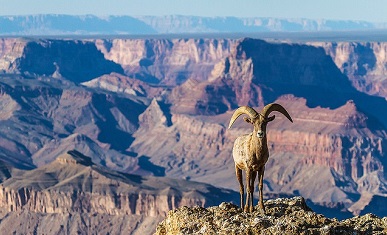Healthier, safer summers – brought to you by the EPA
Editor’s note: This post was updated on May 25, 2018
Summer is finally here.
We’ve longed to hear the waves crash, to see the kids play in the backyard sprinkler, to pack up the car for the annual camping trip.
Few of us ever think about the fact that one government agency is working hard to keep our beaches, national parks and outdoor air healthier and safer during these wonderful summer months.
Here are three ways the U.S. Environmental Protection Agency improves summers for all Americans – and what’s at stake this particular season.
1. Gives us safer, cleaner beaches
Americans made nearly 360 million trips to the beach in 2016. We love our ocean and lake days in the summer, and certainly don’t expect to get sick from taking a dip.
Most of us won’t because the EPA works in partnership with states and local governments to protect our nation’s beaches.
The agency enforces laws and administers programs that regulate sources of water pollution at beaches, conducts leading scientific research on pathogens and sets national water quality standards. It also funds grants to states and local governments to help protect our beaches, and provides water quality information to the public.
Even so, beaches are sometimes shut down by pollution – for example, from raw sewage – that can expose swimmers to harmful microorganisms.
Of 3,485 coastal U.S. beaches analyzed a few years ago, 10 percent were above the EPA’s benchmark for swimmer safety, one analysis showed.
We clearly need to work harder, not less, to keep beaches open for visitors. Unfortunately, President Trump’s proposed 2019 budget for the EPA would again seek to eliminate the beach monitoring grants program, a move that could directly affect the health of our beloved shores.

Photo: Duane Romanell
2. Cleans up the air in national parks
There were 331 million visitors to our national parks in 2017 who spent $18.2 billion in surrounding communities. Such tourism supported 306,000 jobs and contributed nearly $36 billion to economic output nationally.
The EPA and other agencies monitor visibility at 155 national parks and wilderness areas across the country. An EPA program to reduce haze and other pollution that affects our parks has led to measurable improvements in recent years.
Today, visitors to the south rim of the Grand Canyon are more likely to get a clear view of the natural wonder than they would have in the mid-1990s when gray haze sometimes made it impossible see the other side of the canyon.
Still today, three of our four most iconic national parks struggle [PDF] with unhealthy air, and visitors miss on average 50 miles of scenery because of haze.
Making things worse, the EPA’s work to reduce the pollution affecting our parks continues to be under threat from Administrator Scott Pruitt, who sued the EPA over a plan to reduce haze when he was attorney general of Oklahoma.

Photo: James Marvin Phelps
3. Reduces deadly smog
This is the time of year when, instead of spending time outside, some children with asthma and seniors with heart conditions are told to stay indoors because of smog alerts.
A number of “code orange” days have already been issued this year in states such as New Jersey, North Carolina, Texas and the Washington, D.C., region.
We have made enormous strides reducing deadly smog pollution. More progress is needed, however, which it’s essential we defend smog standards the EPA issued in 2015.
Once in effect, these standards are expected to prevent 230,000 asthma attacks among children annually – and finally give parents a little less to worry about when their kids bike around the neighborhood, or run through that sprinkler with their friends.

Photo: Matt Molinari
Unfortunately, President Trump’s EPA has signaled it may revisit the smog standard. It also announced plans that could weaken the long-standing, scientific process for developing pollution standards such the smog standard.
In addition, Trump’s proposed budget for 2019 again slashes by one-third funding for state air monitoring warning families about “code red” and “code orange” days when air quality reaches unhealthy levels.
Will it be safe for our kids to play outside in the summer going forward? Or to swim in the ocean or hike in the Shenandoah National Park?
It will if we make the right choice as a country and keep moving forward, rather than backward, to protect and expand critical health protections. It will if we defend the agency that has been working hard since the 1970s to make your summers so much better.












![[alttext]]( /sites/default/files/epasummer_70x70.jpg) Help the EPA save your summer
Help the EPA save your summer
Please do not weaken the long-standing, scientific process for developing pollution standards. Please do not cut the budget. We need a safe environment NOW and in the future.
Phyllis Warren
May 29, 2018 at 5:56 pm